This lens review is going to focus on the W-Nikkor.C 3.5cm f/2.5, in part 2 and 3 I’m going to look at two other W-Nikkor LTM lenses, stay tuned to find out which!
Over the lockdown period I moved away from shooting concerts towards a more casual kind of photography, scoping out locations in the neighbourhood, using photography as a pretext to leave the house and break the monotony of working from home. Before, I would always primarily consider whether a lens is going to be suitable for gigs. The tiny underground (often literally) venues I’d frequent provide very little in terms of lighting and so speed was usually the first criterion I’d take into account. Now that the concern that anything slower than f/2 might not be that useful is gone I was able to consider a wider variety of lenses. Having been very satisfied with the results I was getting with the Japanese Summilux, I turned my attention to lenses from the similar period, especially those that came in the Leica Thread Mount.
In my past investigation into LTM lenses, I somehow missed Nikon. I was well aware of Canon’s offerings as well as Leica/Leitz itself. Coming from a Nikon DSLR, which I credit with making me eventually end up in Leica (I had a mostly manual set of lenses for it, which primed me for this shift), this was a great and surprising oversight. In the process of delving deeper into older lenses, I got an itch to replace some of my more “modern” ones, including the Voigtlander Color-Skopar 35mm f/2.5, with something more classic. Not that there was anything wrong with this particular lens, it ticked all the boxes – great image quality, compact, relatively fast, solid build, easy to find filters. But the call of the classic was strong. It was a purely capricious thing.
That’s when a Google search turned up a tiny and inconspicuous lens, one that inspired feelings of great regret in one reviewer for ever having gotten rid of it. It was the W-Nikkor.C 3.5cm f/2.5, released for the S-mount (Nikon’s answer to the Zeiss Contax) and LTM in 1951. A single-coated, non-retrofocus, Gauss type, moderate wide angle lens.
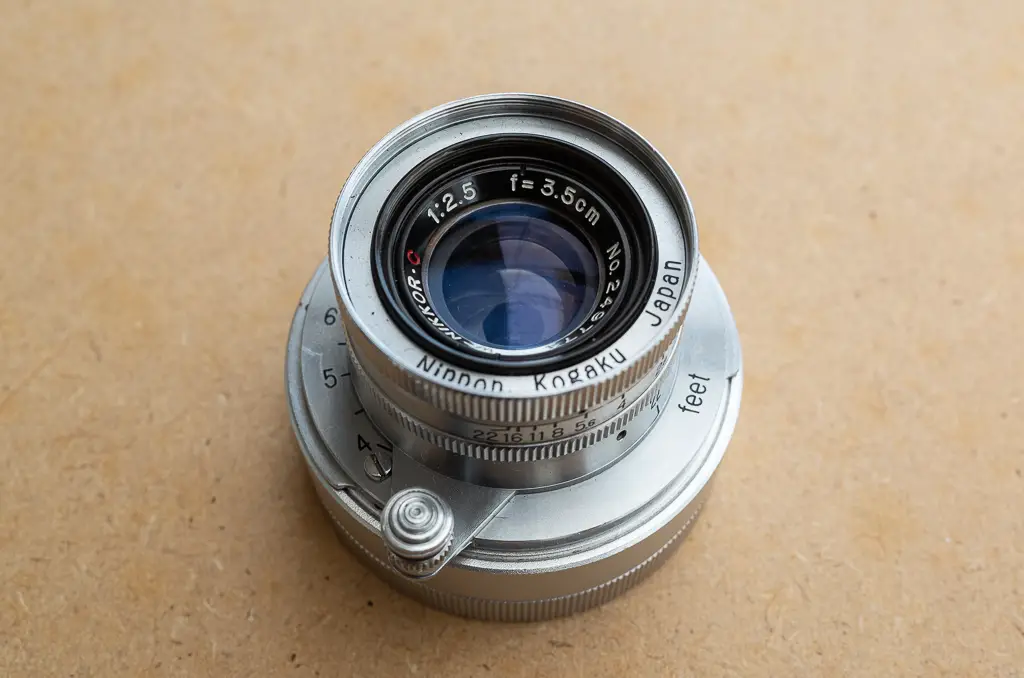
Background
Back in the 1940s and 50s, Nikon was already a big player in the photographic industry. But they weren’t Leica or Zeiss. Most other 35mm camera makers copied either one of them, Nikon was in the Zeiss camp. Their rangefinders looked remarkably like Zeiss Contax ones, with the seemingly identical (and over-engineered, if you ask me) internal/external lens mount. Many of their lenses copied Zeiss formulas. But Nikon wasn’t just second-grade Zeiss, they produced photographic gear every bit as good, on occasion even better, than the Germans did in those days. They paired outstanding build quality (by any standard) with optical designs that always strived and often succeeded to improve on the original. They made lenses not only in their own S-mount, but also in LTM and even occasionally in Contax mount.
Sometimes it’s difficult to ascertain what exactly makes a lens appealing. 35mm and wider has never particularly been my thing, 50mm and up just felt a lot more natural. But once I mounted the W-Nikkor.C 3.5cm f/2.5 lens on my Monochrom it did not come off for a good while. It might not be a pancake but it’s still impressively small, sticking out by less than an inch (about 23mm) from the camera mount, and being about an inch and a half (~35mm) wide. It makes for a very compact combo, pocketable even if you have roomy coat pockets. It looks petite even on my Leica III body. And it offers a tremendous fun factor.
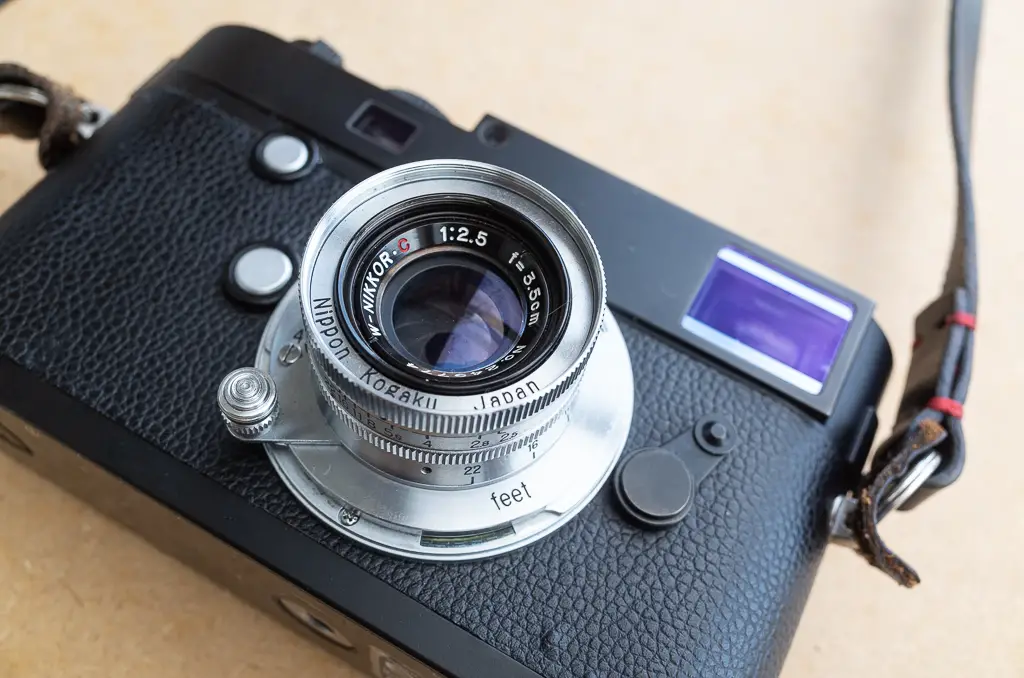
Build and handling
The W-Nikkor.C 3.5cm f/2.5 shares its basic specs such as the focal length and maximum aperture with the Voigtlander, but it’s even smaller. Curiously, it’s not lighter which gives it this really nice, old-timey, solid brass feel. The LTM version was available in chrome and later chrome with a black band (same formula). Comes equipped with an infinity lock so keep that in mind when getting an adapter for it (it requires the version with the cutaway). It has a ~180 degree focus throw typical for LTM and focuses down to 3.5ft (1m). Focusing feels smooth with the right amount of resistance but that of course might depend on the condition of a particular copy. The 8 curved blade aperture stops down to f/22 at full-stop clicks.
What adds to the pleasure of shooting with the W-Nikkor.C 3.5cm f/2.5 is the fact that it’s so small you can’t see it in the viewfinder, not even in the very corner outside of the 35mm frameline. You have to look at an angle to even see that you have a lens mounted. With the hood on, the blockage is limited to the tip of the corner of the 35mm frameline and is pretty negligible. The filter thread size is 34.5mm. Good luck finding filters this size! Luckily, there’s an easy solution detailed below.
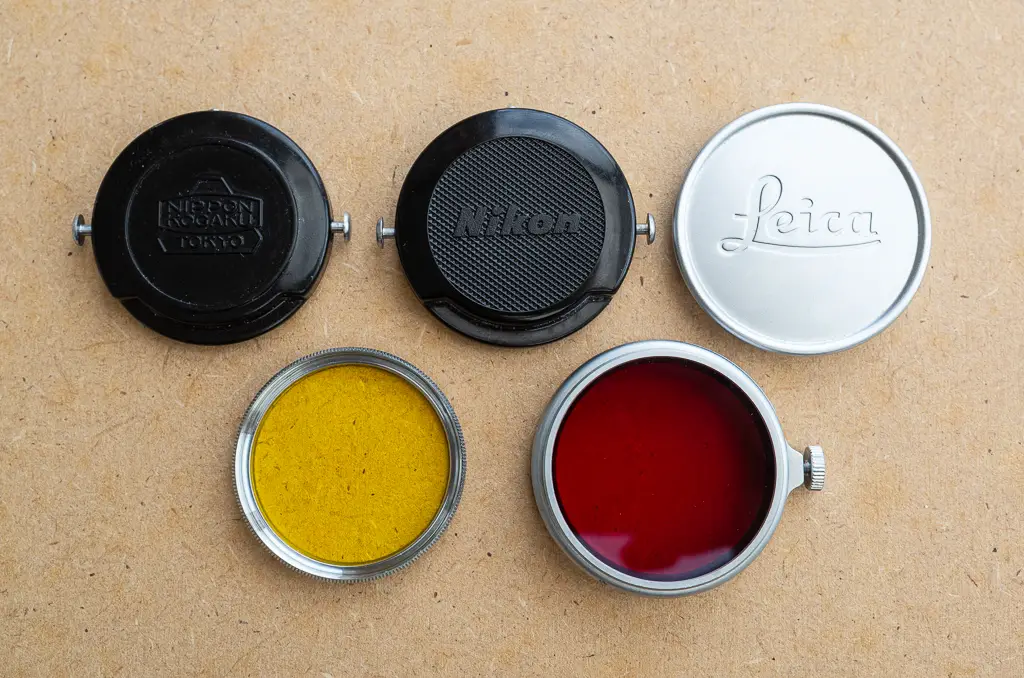
LTM or S-mount?
All that the LTM version requires to mount it on a digital Leica M body is an LTM to M adapter, either a genuine Leitz or a third party one, in order to bring up the 35mm framelines and correctly focus using the rangefinder.
Problem-free adaptation of an S-mount lens isn’t always a given, especially in the case of wide angle lenses. However, the Amedeo S to M adapter is officially compatible with this lens and won’t cause any issues. It is a much more complex adapter, making it a lot more expensive, and therefore making the LTM version more sought-after. Personally, I also think the LTM version of the W-Nikkor.C 3.5cm f/2.5 looks better due to its smaller size and chrome finish.
Filters and hood
The filter thread of the LTM version of the W-Nikkor.C 3.5cm f/2.5 is a difficult to find 34.5mm, however A36 (36mm) clamp-on filters (as well as the SOOGZ A36 to 39mm adapter) fit perfectly and are easy to come by. They also don’t interfere with adjusting or reading the aperture value. The mouth of the lens doesn’t rotate when changing the aperture so no issues with using gradient filters. If you’re as attached to using filters as I am, this is very good news.
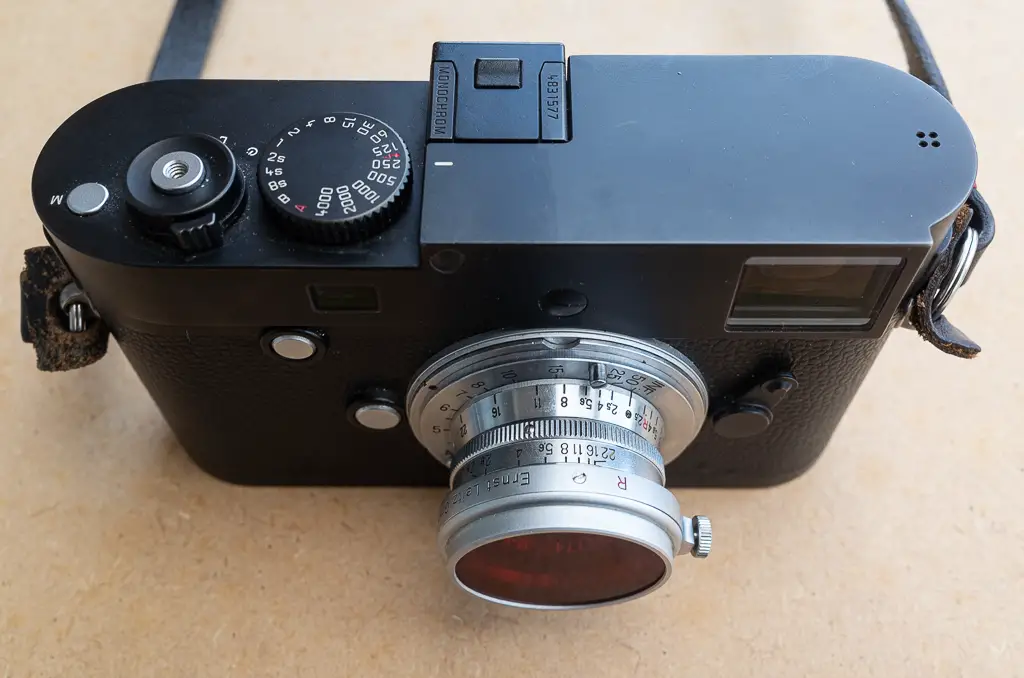
This also means that if you want to use a hood, you don’t have to look for the illusive and pricey genuine Nikon accessory. Leitz FOOKH hood (for the Summaron and Elmar 3.5cm lenses) fits and compliments the lens’s chrome finish well. It doesn’t black out the corners even when stacked with an A36 filter.
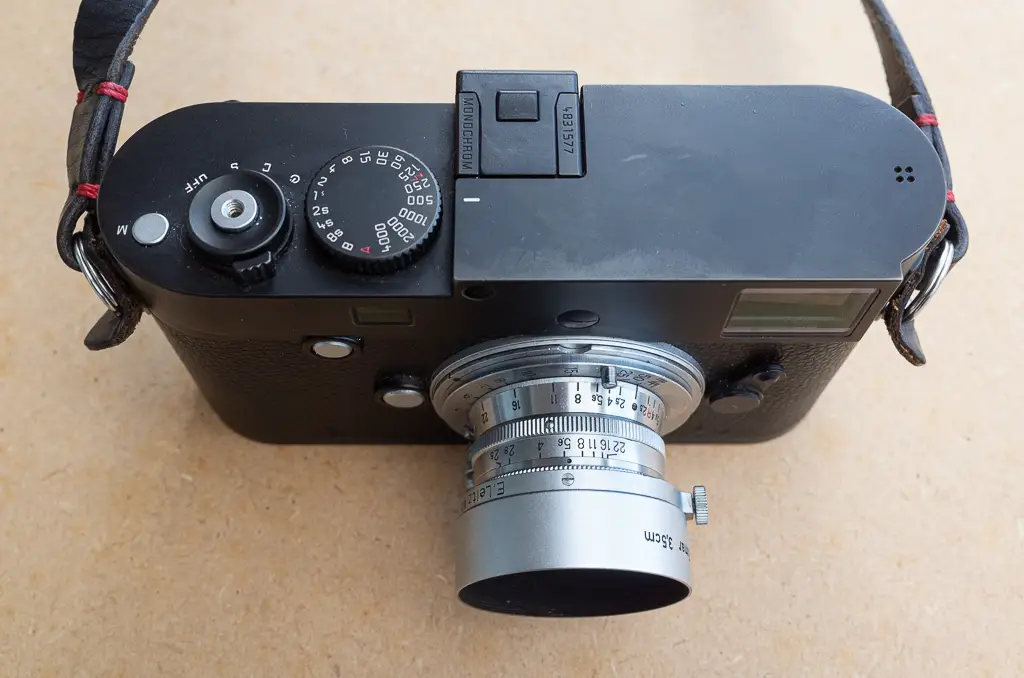
Image quality
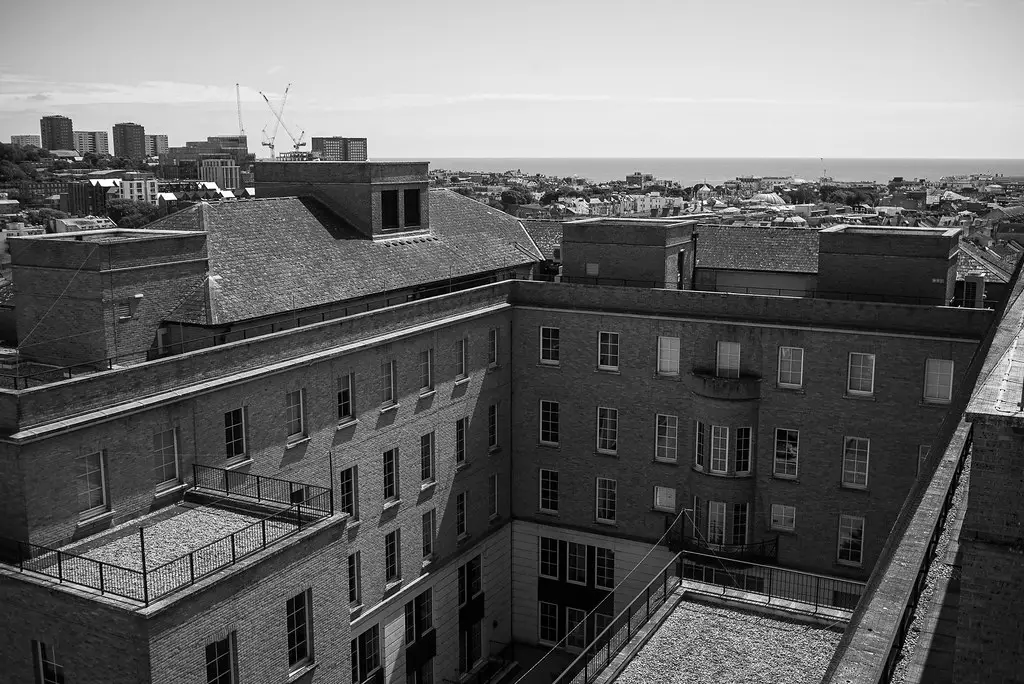
A disclaimer – I don’t perform tests on lenses, nor do I directly compare centre and corner sharpness. My shots might often be quite similar because I revisit the same spots over and over, but also I very well will not be able to present similar shots from the different lenses for comparison. I treat all my shots but try to stick to the basics, and avoid cropping whenever possible. Because I only shoot digital black and white, there’s no way for me to comment on issues such as chromatic aberrations or colour shifts.
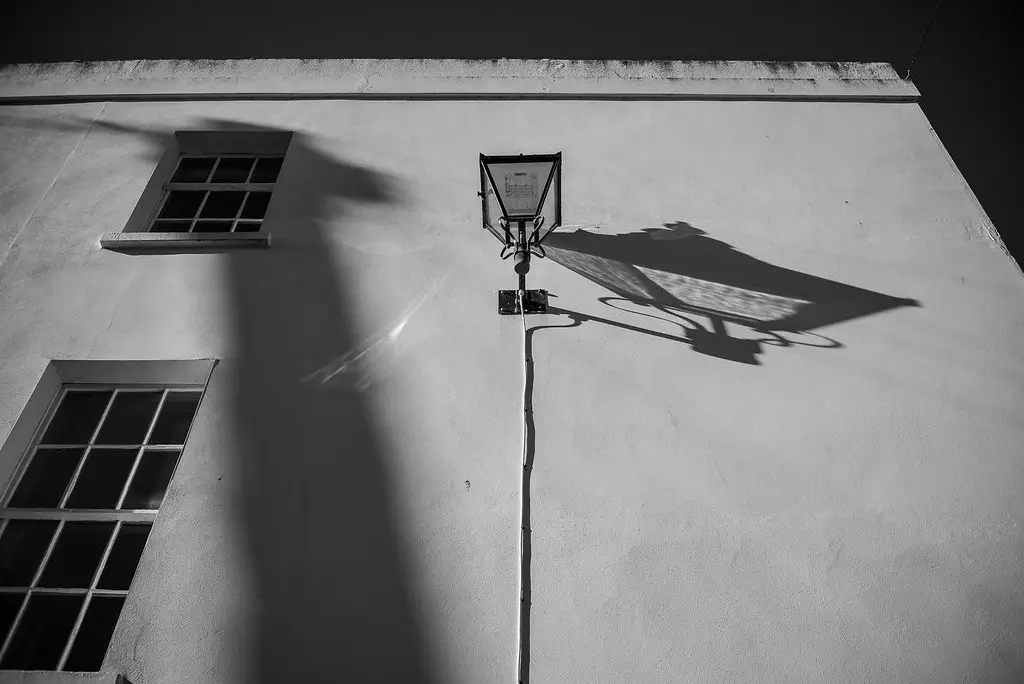
The W-Nikkor.C 3.5cm f/2.5 is more than sufficiently sharp in the centre and very good at bringing out textures. The sharpness drops to a degree in the corners although not drastically. I don’t stop it down past f/5.6 and find it acceptable throughout. I don’t think the amount of detail this lens delivers should be an issue for anyone but those particularly fussy in this regard, in which case – hey, what are you doing reading a review of a 70 year old lens?
I didn’t spot any noticeable distortion, which is no surprise as symmetrical non-retrofocus designs rarely suffer from it. The vignette is low to moderate but I say so as someone who likes vignetting. It’s one of those lenses I like to add a little extra to.
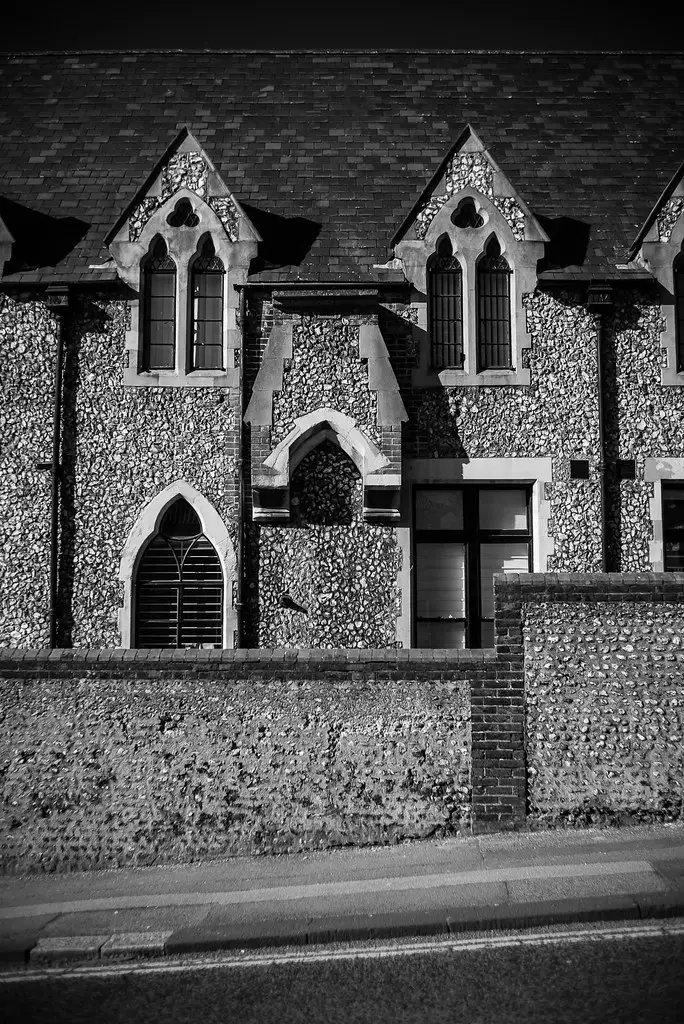
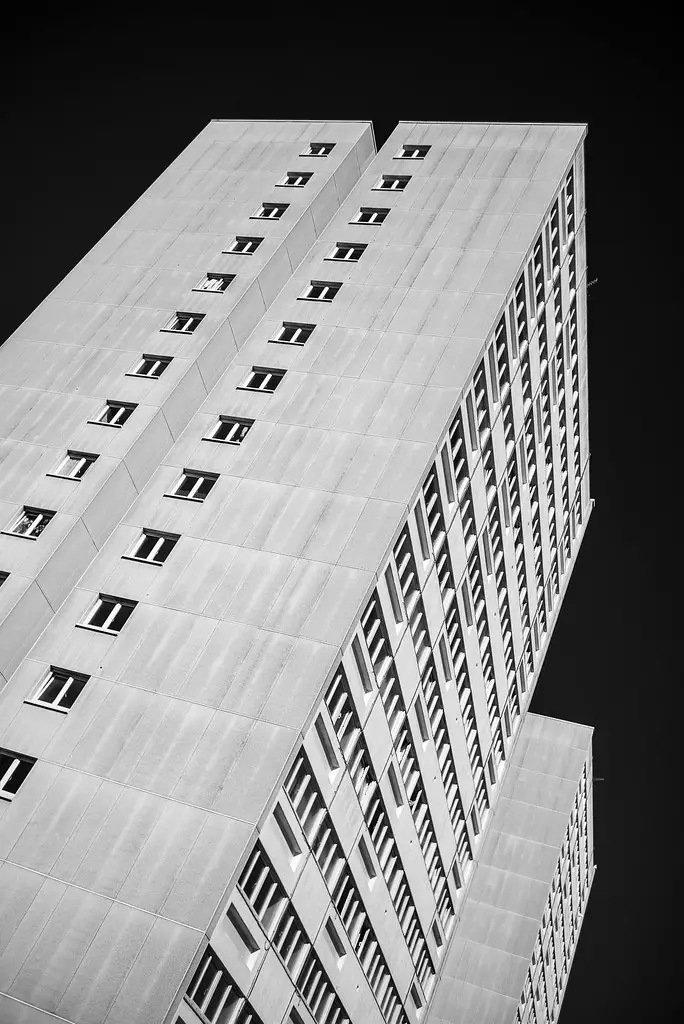
Contrast is good for a lens this old, I like to pump it up by using a red or dark red filter which it also handles very well. Bokeh is quite nervous but I think it adds to the classic, imperfect look the lens produces. In wide angle lenses it’s not usually a characteristic that takes high priority over sharpness and distortion.
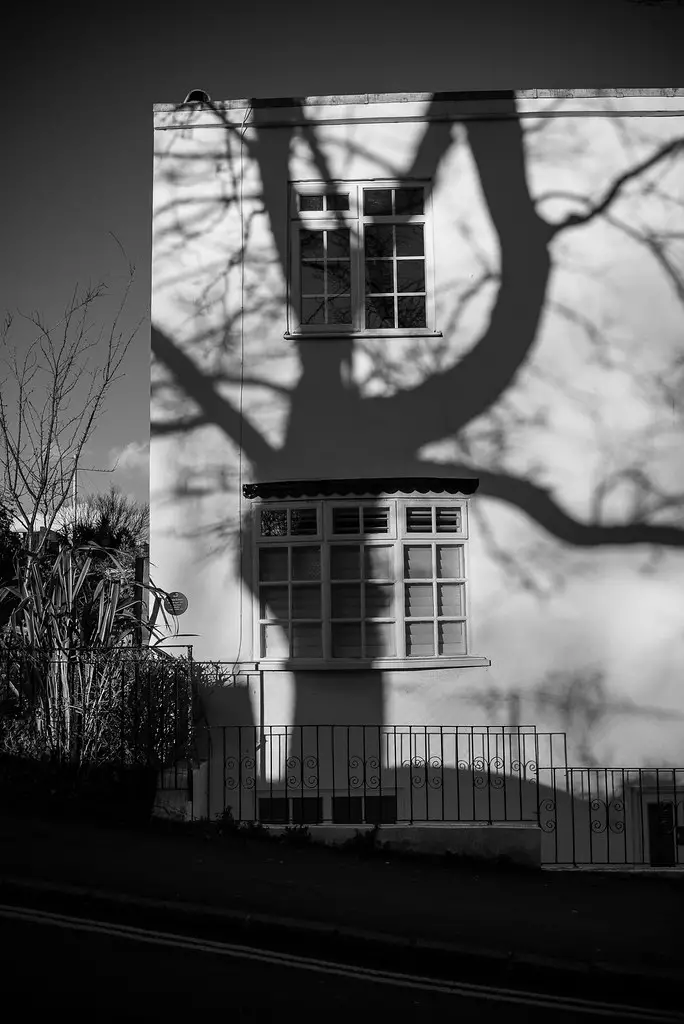
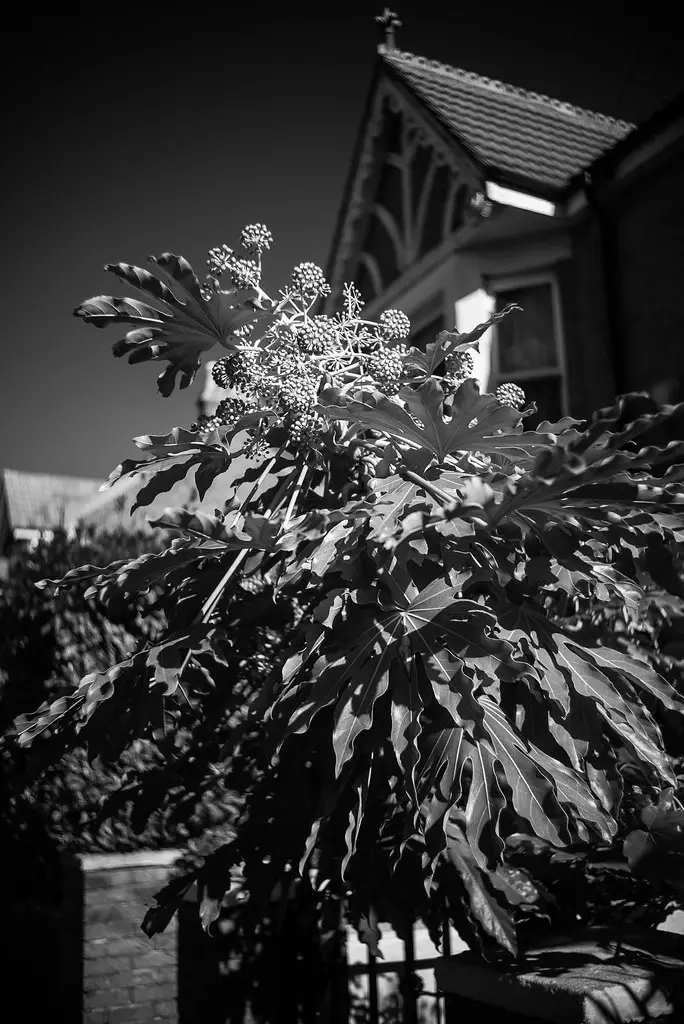
The flare resistance is quite impressive even when used without a hood. The C in the name indicates it’s coated. Taking photos against the sun hasn’t proved to be an issue in normal shooting.
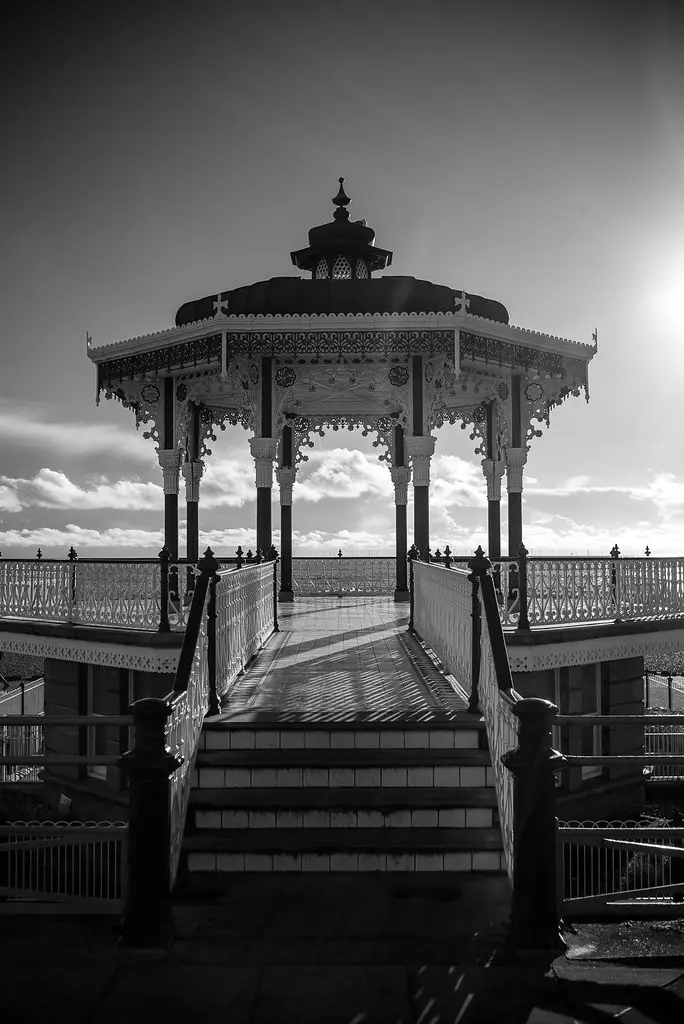
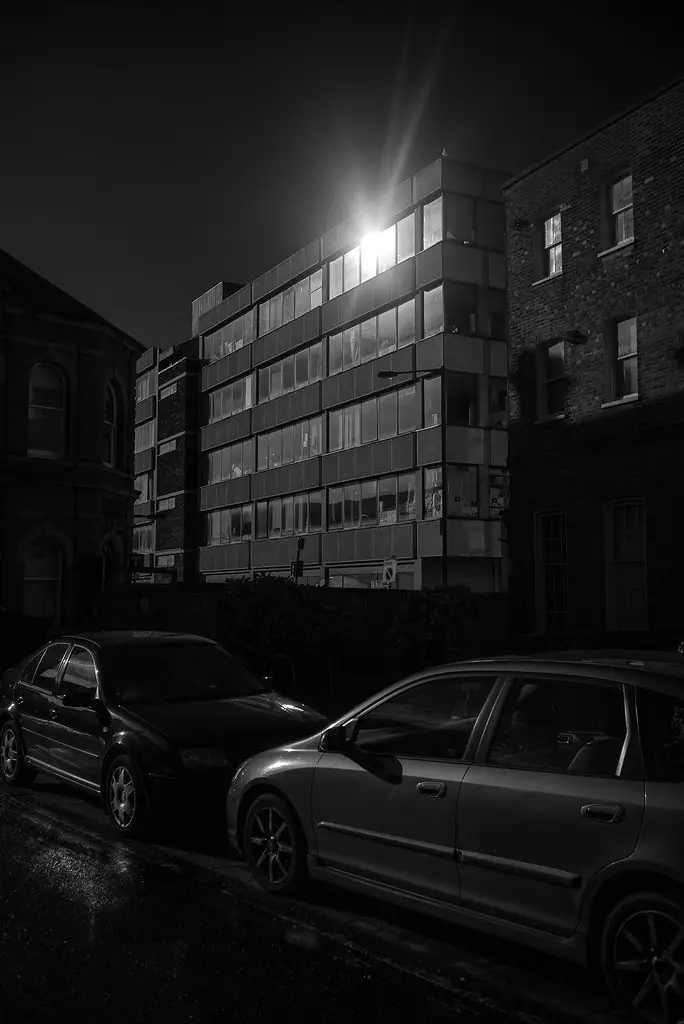
Final thoughts
The W-Nikkor.C 3.5cm f/2.5 is a beautifully crafted classic lens that belongs mounted on a camera, not behind glass in a collector’s cabinet. It offers a good balance of resolution sufficient for digital and subtle vintage charm that doesn’t overwhelm the photo. Using it feels effortless, despite its small size it’s anything but flimsy and it’s surprisingly comfortable to use. This lens has certainly piqued my curiosity about the other, similar Nikon offerings. It wasn’t long until I zoomed in on its wider and seemingly less popular sibling.
Share this post:
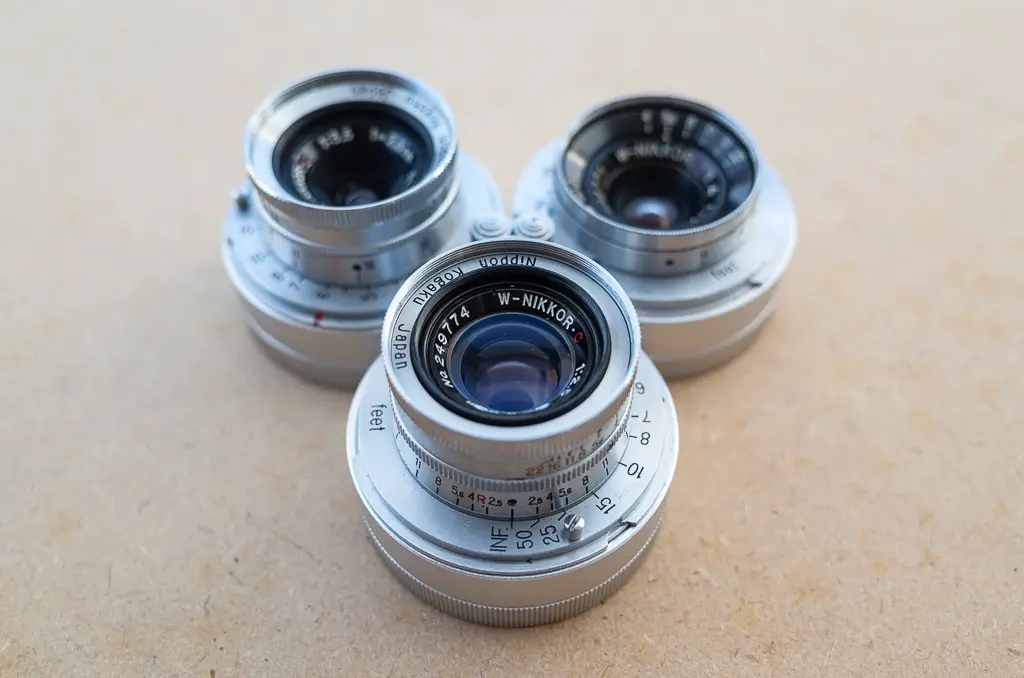








Comments
Mike Watkins on Nikon (Nippon Kogaku) W-Nikkor.C 3.5cm f/2.5 LTM – Nikon’s Tiny Gems, pt 1 – By Agata Urbaniak
Comment posted: 27/09/2021
Hopefully your wonderfully sharp and sparkling pics won't force up the price of these beauties!
Comment posted: 27/09/2021
Comment posted: 27/09/2021
Kurt Ingham on Nikon (Nippon Kogaku) W-Nikkor.C 3.5cm f/2.5 LTM – Nikon’s Tiny Gems, pt 1 – By Agata Urbaniak
Comment posted: 27/09/2021
SEBASTIAN on Nikon (Nippon Kogaku) W-Nikkor.C 3.5cm f/2.5 LTM – Nikon’s Tiny Gems, pt 1 – By Agata Urbaniak
Comment posted: 28/09/2021
Comment posted: 28/09/2021
John Earnshaw on Nikon (Nippon Kogaku) W-Nikkor.C 3.5cm f/2.5 LTM – Nikon’s Tiny Gems, pt 1 – By Agata Urbaniak
Comment posted: 28/09/2021
Lee on Nikon (Nippon Kogaku) W-Nikkor.C 3.5cm f/2.5 LTM – Nikon’s Tiny Gems, pt 1 – By Agata Urbaniak
Comment posted: 28/09/2021
Comment posted: 28/09/2021
Jonathan Leavitt on Nikon (Nippon Kogaku) W-Nikkor.C 3.5cm f/2.5 LTM – Nikon’s Tiny Gems, pt 1 – By Agata Urbaniak
Comment posted: 28/09/2021
In discussing 35mm LTM lenses don't forget to remember the Schneider Xenogon F2.8 which is quite impressive and has great contrast. Not sure what they cost but they're worth it too.
Sroyon on Nikon (Nippon Kogaku) W-Nikkor.C 3.5cm f/2.5 LTM – Nikon’s Tiny Gems, pt 1 – By Agata Urbaniak
Comment posted: 29/09/2021
Dan Castelli on Nikon (Nippon Kogaku) W-Nikkor.C 3.5cm f/2.5 LTM – Nikon’s Tiny Gems, pt 1 – By Agata Urbaniak
Comment posted: 30/09/2021
In the book “War Without Hero’s” by David Douglas Duncan, he recounts how he used a Nikon 28mm lens on his M3. (A book on Viet Nam published in 1970.) The 28 surpassed any other lens he had tested.
Comment posted: 30/09/2021
Comment posted: 30/09/2021
Dan Castelli on Nikon (Nippon Kogaku) W-Nikkor.C 3.5cm f/2.5 LTM – Nikon’s Tiny Gems, pt 1 – By Agata Urbaniak
Comment posted: 30/09/2021
“There must be something really special with those Nikon lenses from that era.”
Jonathan Leavitt on Nikon (Nippon Kogaku) W-Nikkor.C 3.5cm f/2.5 LTM – Nikon’s Tiny Gems, pt 1 – By Agata Urbaniak
Comment posted: 04/10/2021
David Kovaluk on Nikon (Nippon Kogaku) W-Nikkor.C 3.5cm f/2.5 LTM – Nikon’s Tiny Gems, pt 1 – By Agata Urbaniak
Comment posted: 04/10/2021
Comment posted: 04/10/2021